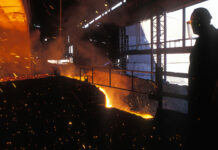
ONE sign coal’s reputation is being gradually rehabiliated is that banks and insurers are becoming interested in the the mineral again.
“I think people are reviewing their position. They are looking at the situation and saying, there’s a possibility that we can fund some of these things,” said Mike Teke, CEO of Seriti Resources and a director of Seriti Green which is investing in renewable energy. Teke is also the recently appointed chairman of the Global Alliance for Sustainable Coal (FutureCoal).
“If I were to walk into a bank in South Africa today and ask: ‘can you fund high efficiency, low emission technology in power stations’, they will fund it.” he said.
This is a far cry from the attitude of lenders just over five years ago, prior to the twin global shocks of Covid (2020) and Russia’s invasion of Ukraine (2022). These events are though to have catalysed a rethink of coal’s role, especially as fuel.
Energy insecurity and the prospect of negative economic growth appeared to have injected fresh legs into coal as a future mineral. Perhaps, some say, this has always been so: the world consumes twice as much coal today as in 2000, and four times the level of the fifties.
Notions of ‘peak coal’ have changed. The International Energy Agency has altered its language amid surging demand in India and China. Coal is now expected to plateau rather than crest, the IEA says. Demand may only drop after 2030, according to its estimates.
“Countries which have the best energy system, that’s a tailwind. It’s a tailwind that gives you an opportunity then to invest,” said Teke.
It’s a reason why South Africa’s government has included coal in its list of ‘critical minerals’; a controversial inclusion perhaps until the impact of not having energy strikes home. South32 on Thursday raised the prospect of closing its aluminium facility Mozal, rising 5,200 jobs and hundreds of suppliers after failing to reach a new power agreement with Mozambique. One pressure Mozambique is facing is a drought that has cut the capacity of the Cahora Bassa hydroelectric scheme.
“For us, as a country, I want us to concentrate on using coal because it’s a pragmatic strategy; it’s real,” says Teke. “And because we understand the science behind climate change, let us invest in wind and solar, because they are viable, they work.
“When you have to deal with ‘intermittency’ when there’s no sun, when there’s no wind, then coal then becomes your baseload.”
Thermal coal is increasingly viewed as a valuable input in a broader, more inclusive strategy towards energy. It is what CEO of Thungela Resources July Ndlovu recently referred to as a corrective towards “false binaries” that forces economies to make choices about renewables instead of coal.
“If we don’t mine coal in South Africa, our economy will crumble,” said Teke. “Our economic growth between the year 2004 and 2008 was aggressive – 4% or 5%. Then it came down to 1%, and now we are 0.6%. If we were to stop coal now, we’ll be in trouble.”







